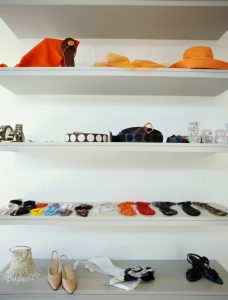 When something comes between you and your customers – like not having product in-stock or providing offers that aren't relevant to the customer – it causes delays and makes it harder to complete transactions in a satisfying way. But, an inexpensive sensor, beacon or Radio Frequency Identification (RFID) tag placed between you and your customers can help you get closer.
When something comes between you and your customers – like not having product in-stock or providing offers that aren't relevant to the customer – it causes delays and makes it harder to complete transactions in a satisfying way. But, an inexpensive sensor, beacon or Radio Frequency Identification (RFID) tag placed between you and your customers can help you get closer.
Those simple little devices are part of the trendy Internet of Things (IoT) conversation happening now -- and they can help you sense who your customer is and what she wants. They’ll also help you better understand behavior and preferences and allow you to act on those insights to create a more engaging customer experience.
When retailing was a simpler business, store owners knew their customers. As society advanced, the stores got bigger, and entire chains of retail stores emerged around the country and the world. As the businesses grew, merchants became separated from customers and relied more on spreadsheets and reports to run the business than a handshake and a smile. With the advent of the Internet, the modern merchant was able to track and understand their customers better, but only while they were online shopping. This was impersonal and, in many cases, the retailer was not able to tie the online customer to the in-store customer, creating customer dissatisfaction and operational failures. This is where embracing the IoT can be a genius move for retailers.
By bringing sensor technology into a bricks and mortar store, the website and store can be on equal footing to recognize customers and meet their expectations. There are three main ways the IoT can help the retailer:
- Smarter supply chains. From understanding store inventory, to making distribution centers smart, retailers are better able to manage the flow of merchandise throughout their supply chain. By using RFID and other item tracking devices, warehouses can self-modify so fast-moving goods can be closer to the loading/unloading areas to decrease transit time.
- Smarter stores. By bringing more location tracking technology into the store, a retailer can better understand in-store shopping behavior and use that insight to better layout store traffic patterns. This can be done to help customers and to better manage security and loss prevention. Using the same item tracking technology as the supply chain, staff can also track merchandise in the store to provide an unbroken chain of product custody through payment and customer ownership.
- Connected customers. Most customers have smart phones, which puts a retailer in a position to engage with the customer each time they walk into the store. By using customer data from loyalty programs and previous shopping experiences, combining that with inventory data and promotions, a retailer can now provide near-real-time offers to in-store customers to drive closer engagement and satisfaction.
Getting the most out of the IoT means a retailer needs to invest in a few key areas:
- Data management. Understanding what, where and how to store the massive amounts of data that are generated by the IoT is key.
- Streaming data. Making use of data while it is still in transit, flowing through sensors sitting on display shelves or in RFID tags in warehouses or distribution centers, helps you understand inventory productivity in the moment.
- Enriching data on the fly. Combining data from multiple sources and filtering out the data noise to develop a more complete picture allows you to shape interactions with your customers.
- Mobility. Optimizing your in-store system for mobile devices for both customers and staff is important. If they can’t see your communications, they can’t act upon them.
- Security. Take necessary measures to keep all data secure.
- Analytics. Analytics are a requirement to help retailers sense, understand and act on the data patterns that lead to a more engaging shopping experience with customers. Without analytics, all that collected IoT data is meaningless.
Learn more about the IoT and the connected customer by reading this white paper from the International Institute for Analytics: IoT in Retail -- Engaging the Connected Customer.
